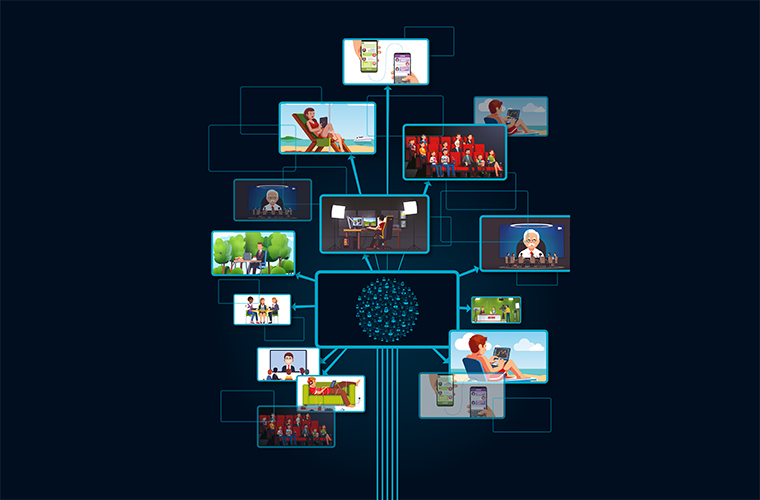The future of connectivity

Will new connectivity tech create a more unified society or a more fractured one? How we use them is the key The more you know about a subject, the harder it is to see the big picture, and the harder it is to assess its relative importance in the wider world. From politics, or the performance of your football team, to the features of your new phone, tunnel vision is an easy thing to fall into. This myopia can be particularly severe when it comes to how we look at technology. In the tech world, we are obsessed with improvements and updates, new features, improved speed, better graphics – the ones that have just been made as well as the ones coming up. With technologies constantly being launched and updated, it’s easy to get caught in the tech news cycle. In recent years there’s been a buzz about connected devices, and we imagine the future could be very much like our own – but with more connectivity.
Getting connected
Increasing connectivity, however, also transforms the society that is using it. The difference between life in 2006 (the year the iPhone launched) and now isn’t just a difference in connectivity – it’s an entire change in the way we look at and experience the world. When we talk about connected devices, perhaps we should also discuss what we want a connected society to look like. Artificial Intelligence can free some of us from repetitive, time-consuming tasks and could solve problems that might require many days of effort from a human being. We might wonder what will fill the vacuum left by those tasks, and how will our work lives change? Connectivity with 5G is going to mean access to huge data streams for almost any content, anywhere. What does that mean for how we’ll spend our time, and where? We’re already seeing companies and industries merging and collaborating as they focus on more than technology-specific questions. Within Sony, for example, you’ll find divisions dedicated to mobile phones, gaming, film production, consumer electronics, and professional film and TV equipment. Companies like Sony are starting to combine these previously siloed resources to ask bigger questions, and to try and tackle them.Connectivity in the future
One of the questions tech and media organisations are asking is: what does the future of entertainment look like? It’s possible to already paint some of this picture. Ultra High Definition technology will create richer, hyper-real images, and VR promises truly immersive entertainment. Automatic, comprehensive data tagging will allow for more content personalisation and targeting, and 5G will ensure audiences can access that media any time and from any location. Meanwhile, cloud tools will allow creators to work from anywhere, at a fraction of the previous cost, while the automation of numerous tasks via AI will enable them to focus on deeper, more imaginative work.“Technology will make us more connected as a society, and allow us to create and do more”At Sony, the mission is to empower storytellers with the services, support, and tools to tell their stories in the most creative and engaging way possible – efficiently, and regardless of the content, and no matter the platform. That means using a whole variety of innovations, to help create better entertainment experiences for consumers.











